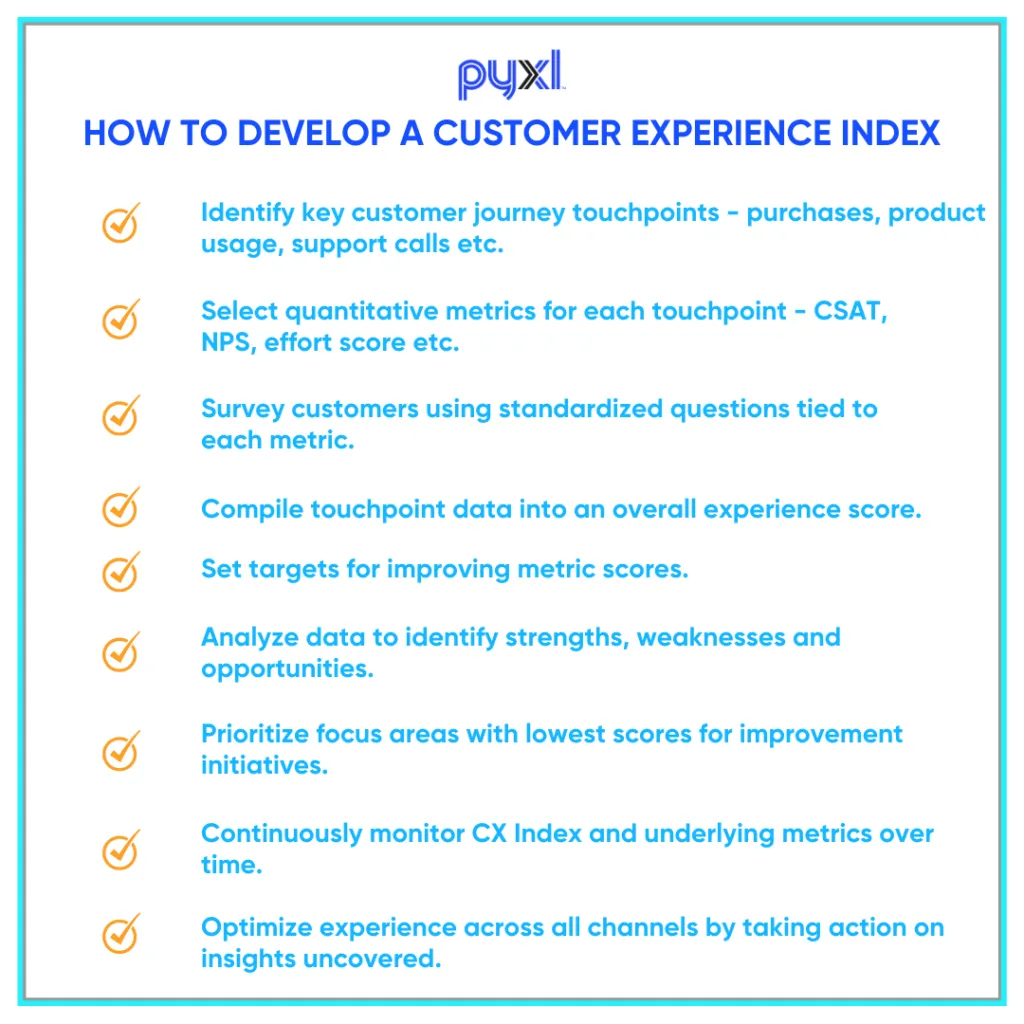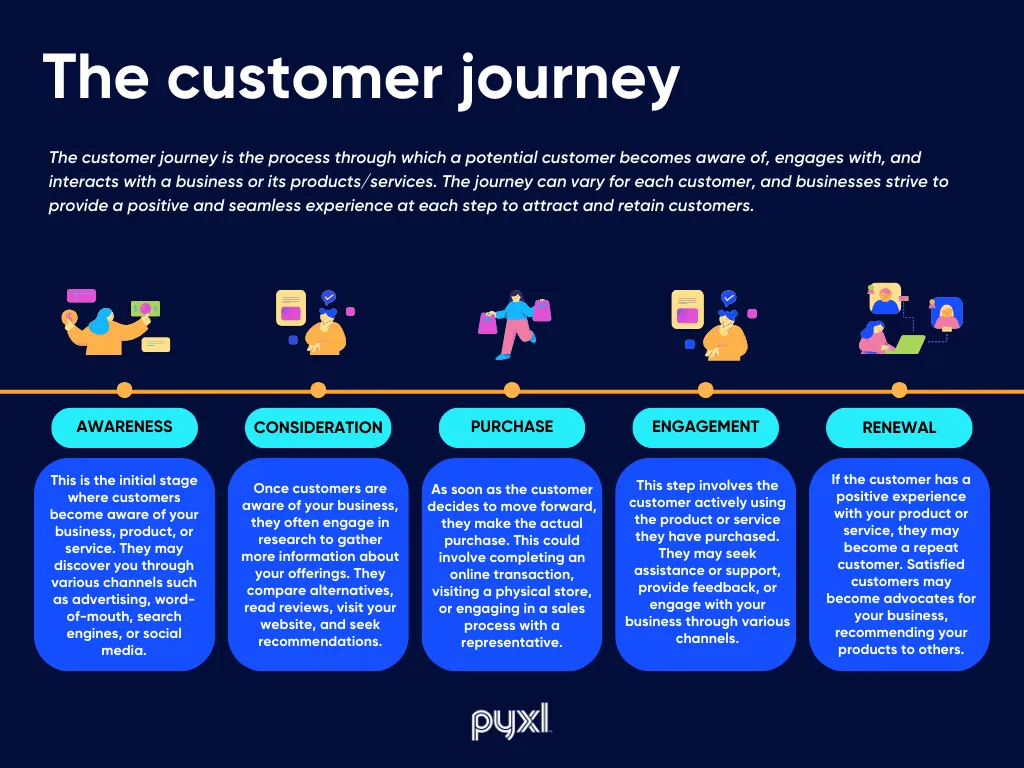Leveraging Customer Experience Strategy to Maximize ROI
In today’s business environment, the impact of customer experience on profitability is more pronounced than ever. Dimension Data’s research reveals that 84% of companies focusing on improving their customer experience see a significant increase in revenue.
Yet, the line between positive and negative experiences is incredibly fine, with 30% of consumers unwilling to return after one bad service experience, as per Hiver’s survey, and 78% abandoning purchases due to poor experiences.
These statistics underscore the critical importance of customer experience in influencing key business metrics like revenue, customer acquisition, and retention, highlighting the need for businesses to masterfully craft customer experiences that not only meet but exceed customer expectations.
Understanding Customer Experience Strategy
At its heart, a Customer Experience (CX) strategy is a meticulously planned approach designed to optimize how customers interact with a brand across various touchpoints and channels, encompassing both the digital and physical realms. This strategy goes beyond merely providing optimal experiences; it actively leverages metrics and data to pinpoint areas where the customer experience may fall short. By identifying these shortcomings, businesses can iteratively experiment and refine their approach to enhance the overall customer journey.
A robust CX strategy places customers at the epicenter of all business operations – from marketing and design to development and support services. It’s about reimagining how each function within an organization can evolve and improve to deliver an exceptional customer experience.
There are four essential aspects of building a comprehensive customer experience strategy:
- Gauging and Tracking Customer Experience: This involves continuously monitoring how customers interact with various aspects of your business at different points in their journey.
- Collecting Insights: It’s crucial to gather data to map out customer preferences, concerns, issues, and pain points. Understanding the customer’s journey in its entirety allows businesses to build a more empathetic and customer-centric strategy.
- Problem Resolution and Opportunity Identification: Armed with insights, the next step is resolving identified problems and seizing opportunities to elevate the customer experience.
- Iterative Process: A CX strategy is not a one-time effort but a cyclical process of constant improvement. By repeating this process, businesses can stay aligned with evolving customer needs and expectations, ensuring a dynamic and responsive customer experience.
In essence, a customer experience strategy is about creating a seamless, engaging, and satisfying journey for customers, tailored to their evolving needs and preferences. It’s a commitment to continuous improvement and adaptation, ensuring that every interaction a customer has with your brand is not just a transaction, but a step in building a lasting relationship.
How to Create a Successful Customer Experience Strategy
Here are ten practical steps to design an effective customer experience strategy that can transform your business:
Develop a Customer Experience Index
This involves creating a measure to evaluate the quality of customer interactions and the efficiency of your CX strategy. It helps in measuring customer satisfaction, expectations, and loyalty, and ties these elements to revenue generated from CX investments.

Set up Measurable Objectives
Define clear, quantifiable goals to track the return on your CX efforts. This could include comparing Net Promoter Scores (NPS) with industry standards or analyzing customer interaction times across different channels.
Segment Your Audience Base
Avoid treating your customer base as a homogeneous group. Segment them based on demographics, behavior, and other attributes to tailor your CX strategy more effectively.
Capture Regular Feedback
Regularly ask for customer feedback to make them feel valued and gather crucial insights. Utilize advanced tools for real-time feedback collection and analysis.
Build Customer Journey Maps (CJMs)
These maps help visualize the customer’s path through the sales funnel, highlighting opportunities for improvement at each interaction point.

Promote an Effortless Service Experience
Over 90% of customers value effortless customer service. Introduce systems like help desks or live chat widgets to enhance the service experience.
Promote Self-Service Options
Implement a knowledge base and AI-based chatbots to empower customers to find solutions independently, enhancing the overall experience.
Analyze Your Competition
Conduct a competitive analysis to benchmark and optimize your products and services, ensuring you stay ahead of the curve.
Personalize the Experience
Go beyond segment-based personalization and tailor experiences at an individual customer level using data like purchase history and behavior.
According to Epsilon research, 80% of consumers prefer brands that offer personalized experiences and will pay more for them.
Optimize Onboarding and Product Adoption
A smooth onboarding process familiarizes users with your product, improving retention and loyalty. Use guides and tooltips to educate users about your product’s features and benefits.
By following these steps, businesses can develop a CX strategy that not only meets but exceeds customer expectations, leading to increased satisfaction, loyalty, and business growth.
Key Takeaways
Business success now extends far beyond just impressive marketing and sales; it hinges significantly on the strength of customer relationships. Understanding that customers are not just a source of revenue but also act as brand ambassadors is crucial. Every interaction with your brand is a pivotal moment in reinforcing their loyalty and advocacy. This is why investing in an outstanding Customer Experience (CX) strategy is so vital.
Navigating the complexities of perfecting a CX strategy can be challenging, especially when determining the best starting point. Begin with the basics. Implement foundational steps to establish a robust customer service and feedback system through your website or email channels. Use these insights to effectively address customer issues and track your progress with experience scores. As your strategy evolves, expand into more advanced areas like self-service tools and experience personalization. This progressive and informed approach can elevate your customer experience from satisfactory to exceptional, significantly contributing to your business’s overall success.
Contact us for a consultation and take the first step towards transforming your customer experience into a key driver of your business success.
Updated: Nov 18, 2024
 Taylor Farace
Taylor Farace Kati Terzinski
Kati Terzinski Erin Murray
Erin Murray